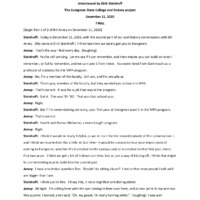Bill Arney Oral History Interview
Item
- Identifier
- Title
- Date
- Creator
- Contributor
-
ArneyBill
-
Bill Arney Oral History Interview
-
November 20, 2020
-
December 11, 2020
-
Bill Arney
-
Eirik Steinhoff
Position: 432 (10 views)

